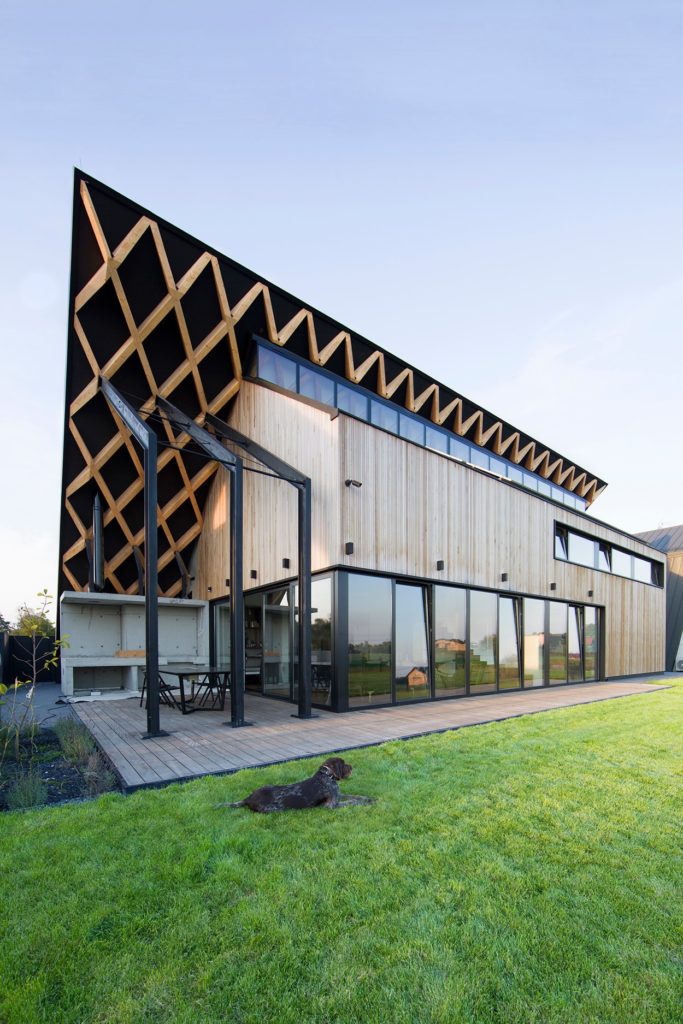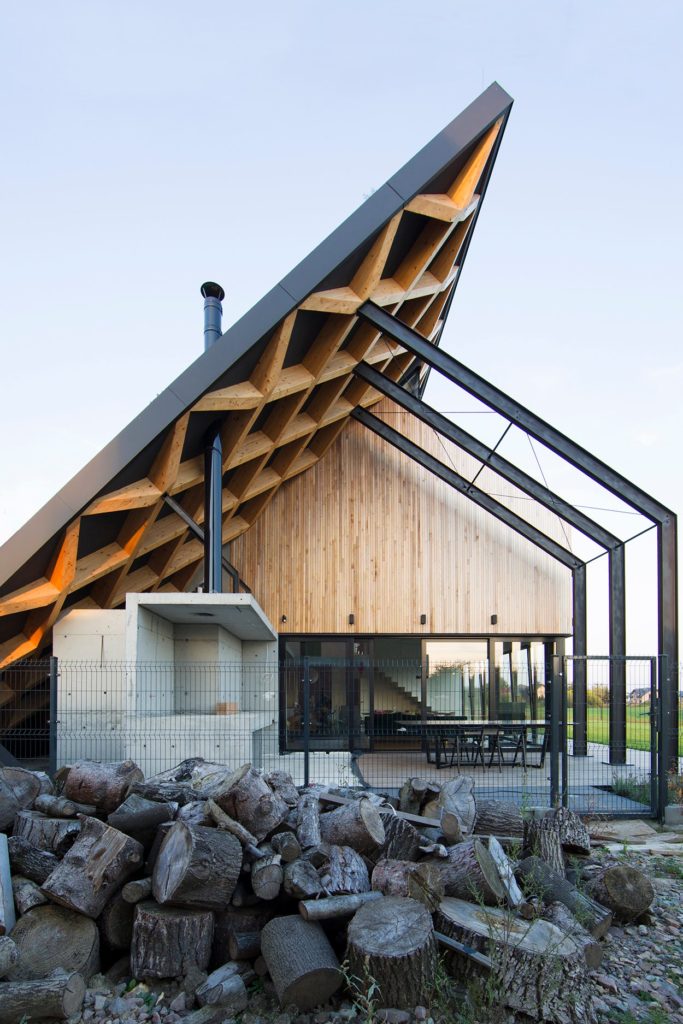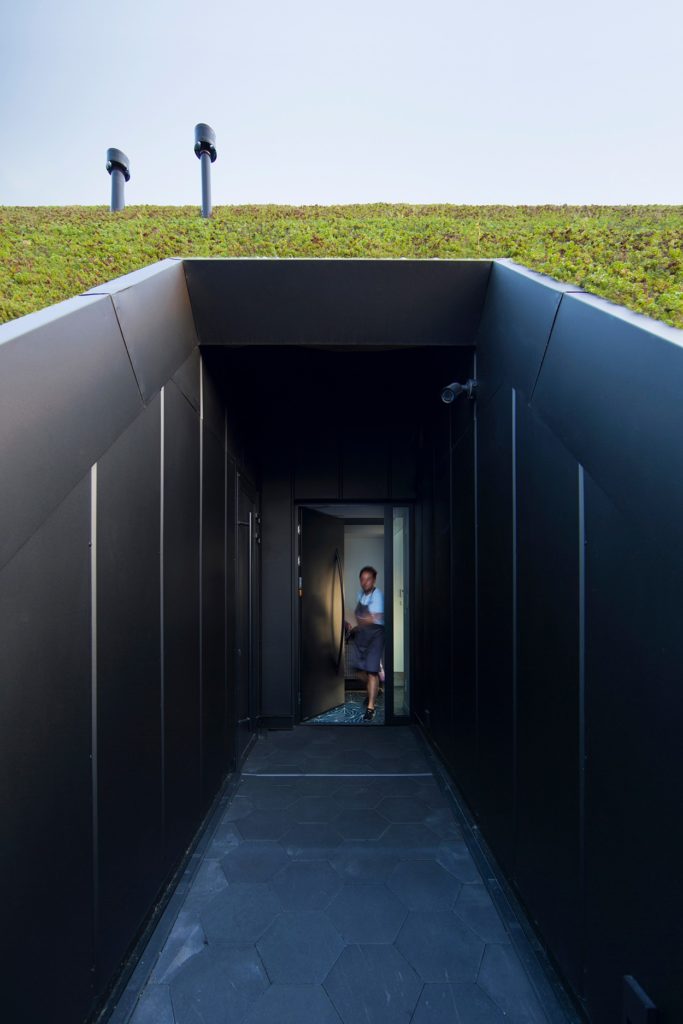5 QUESTIONS TO: Bartłomiej Drabik from Superhelix about the House Behind The Roof and a cruel disease of the architectural community
Media went crazy over this project. The building, located on a small estate near Cracow, proves that any limitation can be turned into an asset.
Anna Jastrzębska
Photos: Bartłomiej Drabik
In this case, regulations forced the architect to use an oblique roof. So, he decided to transform this obligatory feature of the project into an important mean of expression. Not only he extended the roof to the ground, but he also planted stonecrops on it. As a result, the sloping green roof shielded the residents of the house from their neighbours, giving them a sense of privacy that is so difficult to achieve in small estates.
Bartłomiej Drabik, the author of the House Behind The Roof and the founder of the Superhelix Architectural Studio, answers our 5 questions about this original project.

Architecture Snob: Where did the idea for the project of the House Behind the Roof come from?
Bartłomiej Drabik: All of my projects result from detailed research of the plot and its surroundings, the client’s needs, and legal and technical conditions. I have never repeated a solution that I saw somewhere else. This would have been horrible. Inspiration is a very dangerous tool – it can close your mind. We have to remember that most of the realized projects stem from something – solutions may work in one case and be unsuitable for another.
I am obviously interested in what other architects do and I observe their work. When I have a problem and don’t know how to solve a detail I designed, I search for help in realized facilities; however, this is a search for technological solutions, not ideological or stylistic ones. At meetings with clients we do not look at books or magazines, they are not needed. I prefer clients to tell me about their expectations. That is why they come to me – they want me to design something new for them, and not to combine existing solutions.

Did the investor like the concept from the start?
Yes! I believe that he did because I wasn’t trying to convince him to anything, but I was explaining the design path instead. For me, there are no ready solutions. Everything is tailor made. It’s like a suit – I take measurements, I cut and I sew. It has to fit to make the client feel good in it. If not, then I must have made a mistake in the measurements – in this case I am ready to start again, this is on me.

Almost every important architectural magazine in the world has written about the House Behind The Roof. Do you feel that you have achieved media success?
This is my first project that is entirely mine and that has been realized. I have never had any contact with media before; I have never delivered anything for publication before. What surprised me most was how quickly the project received international recognition and who contacted me about it. But I’m not sure if everything currently surrounding the House Behind The Roof can be called a great media success. Like in every case – it’s very relative. For me – a person little known in the national architectural community and completely unknown in the international one – it is definitely a big success. For a popular designer, it could be everyday life.

In your opinion, what has dazzled journalists/editors in this case?
I believe that it was the honesty of my project. I believe that if something does not pretend to be something else, it responds to the user’s needs and results from the conditions of the plot, then it is simply honest and honesty is very much appreciated today.
Of course, the project is effective and possibly some people wanted to interest bored readers with it. But even if an editor published it because s/he wanted to show a sloping green roof that could have been bizarre and shocking for some, it is worth remembering that the building’s effectiveness is a result of a research and of customer needs. It is not my monument, but a house for people to live a pleasant life!

What distinguishes Bartłomiej Drabik in the world of architecture?
In the world of Polish and international architecture, I am a young and completely unknown person, just starting his professional career. I think that extreme individualization of projects distinguishes my work. I focus on contact with clients and on understanding their needs. I do not design buildings for myself. I do it for clients; to design a house made to measure, so that they can live in them comfortably and so that they can identify with them.
I do not believe in ready solutions. I do not have the urge to do something differently, just to shine or shock. I would have never said that I designed something because I wanted it to be different than anything else! It is a cruel disease of our community.





